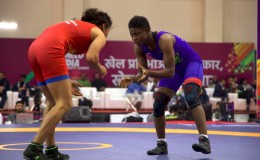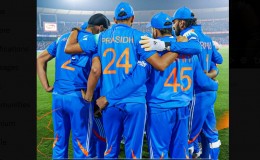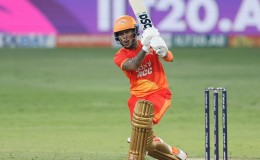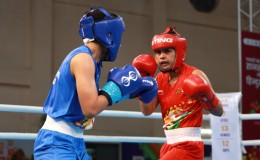 India had sunk in quite a few birdies by the time world at large had the faintest idea about what golf was. Nevertheless, India's not the place where golf originated; its birth could be traced to the middle of the 15th century in Scotland. The Scots, as per the available records and evidence, tried their hand at the sport, and gradually it evolved into the form we know it today.
India had sunk in quite a few birdies by the time world at large had the faintest idea about what golf was. Nevertheless, India's not the place where golf originated; its birth could be traced to the middle of the 15th century in Scotland. The Scots, as per the available records and evidence, tried their hand at the sport, and gradually it evolved into the form we know it today.
Golf though for long remained in the confines of Great Britain. The world had its first brush with it when the English took it to their colonies. And it was probably India that took the first swing at the golf ball outside Great Britain; an assumption supported by the fact that India had it's first golf club in Calcutta way back in 1829, incidentally the first club outside the British Island.
The creation of the first golf club, Royal Calcutta Golf Club, saw the sport swinging to other parts of the country. Royal Bombay Golf Club came up in 1842, followed by and the Bangalore Golf Club in 1876 and The Madras Gymkhana Golf Club in 1877. Gradually, Chennai had another course, Cosmopolitan Golf Club, and Shillong Golf Club came up in 1886. Up north, Srinagar became the first city to embrace the sport, followed by Gulmarg in 1891.
India had about a dozen of golf clubs towards the end of the 19th century, and these clubs indulged in some inter-club tournaments in this period. The country, however, saw its first authentic national-level championship happening in 1892 - All-India Amateur Championship held in Royal Calcutta Golf Club as strokeplay tournament. JF Macniar won the first edition of the tournament that now stands as the second oldest tournament in the world after British Open, which kick started in 1860.
It didn't take much time for the Ladies tournament to make its debut. The Ladies All-India Amateurs began in 1906 at the Royal Calcutta Golf Club with L Walker emerging the winner. And like the men's tournament, it's also going strong without interruption.
But it wasn't for about half a decade that Indians managed to make an impression in either tournament. The Britishers dominated it through and through until IS Malik arrived on the scene, finishing runners-up first in 1945, and then in '47 and '48. But the first Indian to win the tournament was Mohinder Bal in 1949. Malik however won the tournament in the following year, and repeated the feat in 1955 and 1956 as well.
And even as the Indian golfers were making their presence felt, there was something, of equal significant and of far-reaching consequences, happening off the course on the administrative front.
Till the '50s, golf clubs in India were affiliated to the Royal Calcutta Golf Club, which followed the rules of St. Andrews in Scotland. In December 1955, a group of golfers got together to form the Indian Golf Union (IGU), now affiliated to World Amateur Golf Council. Soon, Indian Open Golf Championship, the showpiece event of the Indian Golf Calendar, was launched in 1964 in Delhi. The inaugural championship was won by Australian golfer Peter Thompson, but PG Billo Sethi won the second edition in 1965, the first Indian to achieve the feat and announce the arrival of the Indian golfers at the world stage.
Thereafter, Indian gold has gone from strength to strength. The infrastructure and golf courses have grown manifold, and many players have gone to announce the arrival of India at the world stage.










